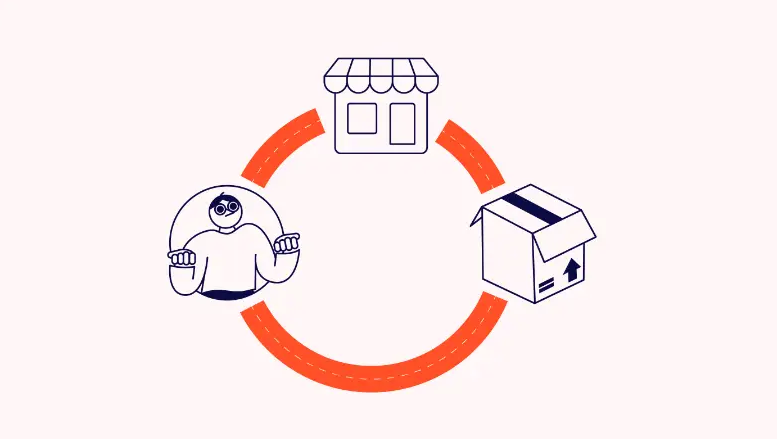Starting a dropshipping business can be an exciting venture, especially with platforms like Shopify that simplify the process. This guide will walk you through everything you need to know to successfully launch your Shopify dropshipping store, from understanding the business model to marketing your products.
What is Dropshipping?
Dropshipping is a retail fulfillment method where a store doesn't keep the products it sells in stock. Instead, when you sell a product, you purchase the item from a third party and have it shipped directly to the customer. This model allows you to operate without the need for inventory, making it a low-risk option for new entrepreneurs.
Why Choose Shopify for Dropshipping?
Shopify is one of the most popular e-commerce platforms, particularly for dropshipping. Here are some reasons why:
User-Friendly Interface: Shopify offers a straightforward setup process, making it easy for beginners to create an online store.
Integration with Dropshipping Apps: Shopify seamlessly integrates with various dropshipping apps, allowing you to connect with suppliers and manage your inventory efficiently.
Scalability: As your business grows, Shopify provides the tools and features necessary to scale your operations.
Support and Resources: Shopify offers extensive support and educational resources to help you succeed.

Getting Started with Shopify Dropshipping
Step 1: Market Research
Before launching your store, it's crucial to conduct thorough market research. This involves:
Identifying Trends: Use tools like Google Trends or social media to find out what products are currently popular.
Analyzing Competitors: Look at successful dropshipping stores to understand their product offerings, pricing strategies, and marketing techniques.
Understanding Your Target Audience: Define who your ideal customers are and what they are looking for in products.
Step 2: Choosing Your Niche
Selecting the right niche is vital for your dropshipping success. Here are some tips:
Follow Your Passion: Choose a niche that interests you. This will make it easier to market your products.
Assess Profitability: Ensure that the niche has enough demand and that you can source products at a price that allows for a reasonable profit margin.
Consider Competition: A niche with high competition may be harder to penetrate, so look for gaps in the market.

Shopify Dropshipping Companies
Step 3: Setting Up Your Shopify Store
Creating Your Store
Sign Up for Shopify: Start with a free trial to explore the platform.
Choose a Domain Name: Select a domain that reflects your brand and is easy to remember.
Select a Theme: Shopify offers a variety of free and paid themes. Choose one that aligns with your brand identity.
Customizing Your Store
Branding: Create a logo and establish a color scheme that represents your brand.
Product Pages: Optimize product descriptions and images. Avoid using default supplier descriptions; instead, create unique content that resonates with your audience.
Legal Pages: Add essential legal pages such as Privacy Policy, Terms of Service, and Return Policy.
Step 4: Finding Suppliers
Choosing reliable suppliers is critical for your dropshipping business. Here are some popular options:
Oberlo: A Shopify app that connects you with suppliers, primarily from AliExpress.
CJ Dropshipping: Offers a wide range of products and has warehouses in various locations for faster shipping.
Printful: Ideal for custom products like apparel and home decor, allowing you to create unique designs.
Step 5: Adding Products to Your Store
Once you've selected your suppliers, it's time to add products:
Import Products: Use your chosen dropshipping app to import products directly to your store.
Set Competitive Prices: Ensure your pricing covers costs while remaining attractive to customers.
Create Collections: Organize products into categories to enhance user experience.

Shopify Dropshipping Wholesalers
Step 6: Marketing Your Store
Effective marketing is essential for driving traffic and sales. Consider these strategies:
Social Media Marketing: Utilize platforms like Instagram and Facebook to promote your products.
Search Engine Optimization (SEO): Optimize your website for search engines to increase organic traffic.
Email Marketing: Build an email list and send newsletters to keep customers informed about new products and promotions.
Paid Advertising: Consider using Google Ads or Facebook Ads to reach a broader audience quickly.
Step 7: Managing Your Business
Once your store is live, focus on managing and optimizing your business:
Monitor Sales Data: Regularly check which products are performing well and adjust your strategy accordingly.
Customer Service: Provide excellent customer support to build trust and encourage repeat purchases.
Adapt and Scale: As your business grows, look for ways to streamline operations and expand your product offerings.
Common Challenges in Dropshipping
1. Competition
The dropshipping market is highly competitive. To stand out, focus on niche marketing and building a strong brand identity.
2. Supplier Reliability
Working with unreliable suppliers can lead to poor customer experiences. Always vet suppliers and consider having backup options.
3. Shipping Times
Long shipping times can deter customers. Choose suppliers with warehouses closer to your target market to reduce delivery times.
4. Customer Returns
Handling returns can be complicated in dropshipping. Clearly communicate your return policy and work with suppliers to streamline the process.
Conclusion
Starting a Shopify dropshipping business can be a rewarding endeavor if approached with the right knowledge and tools. By following this guide, beginners can navigate the complexities of dropshipping and set themselves up for success. Remember, continuous learning and adaptation are key to thriving in the e-commerce landscape. With dedication and effective strategies, you can build a profitable dropshipping store that meets the needs of your customers and achieves your business goals.


